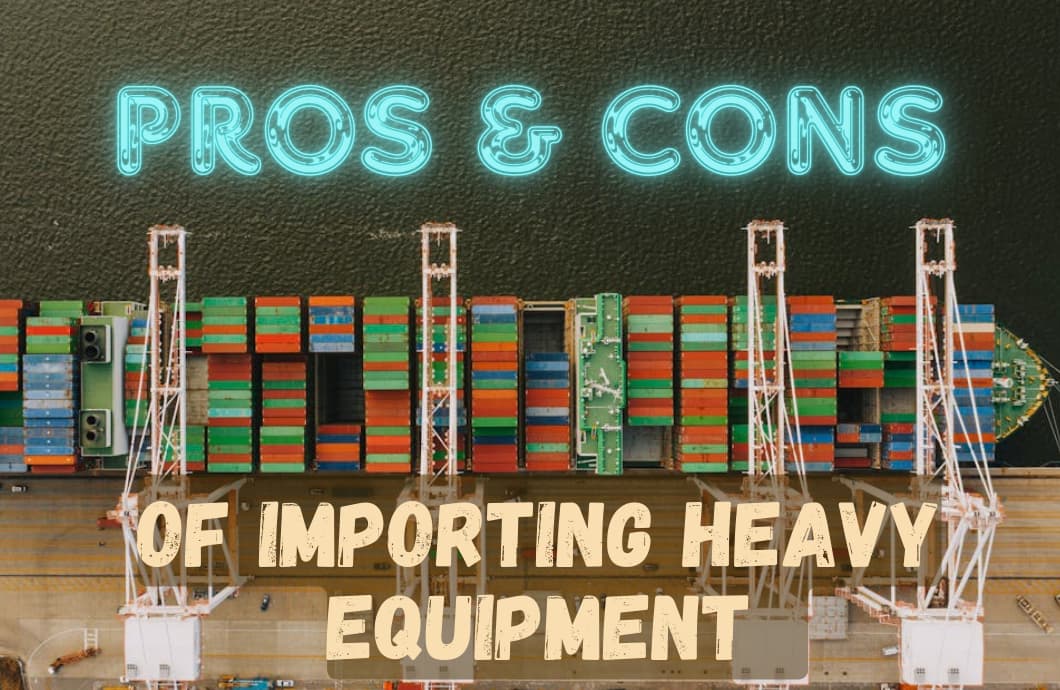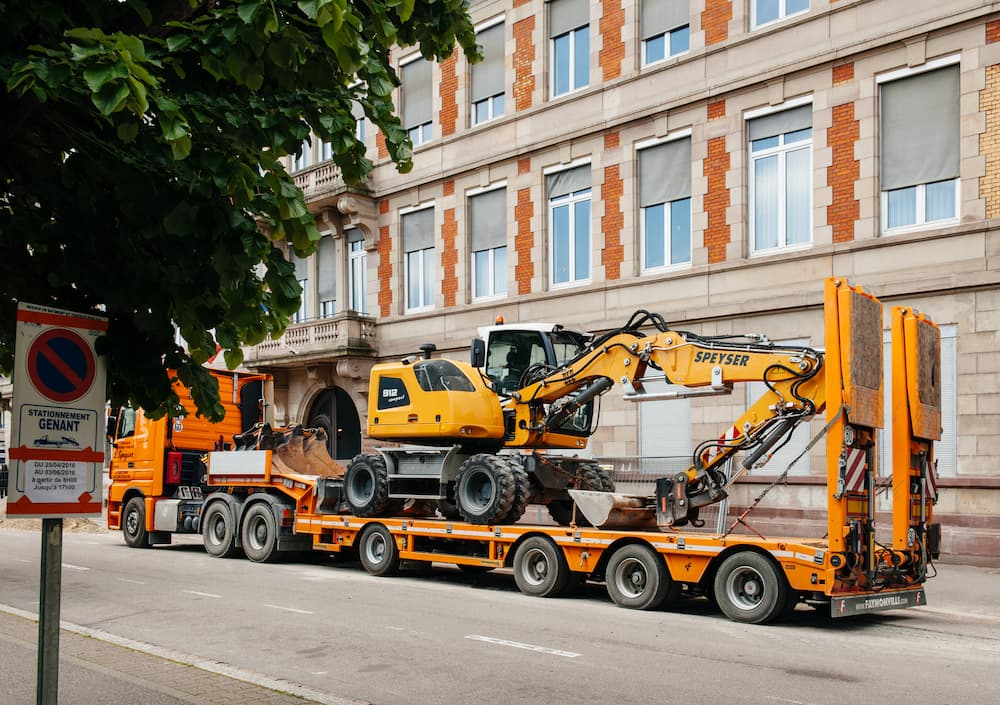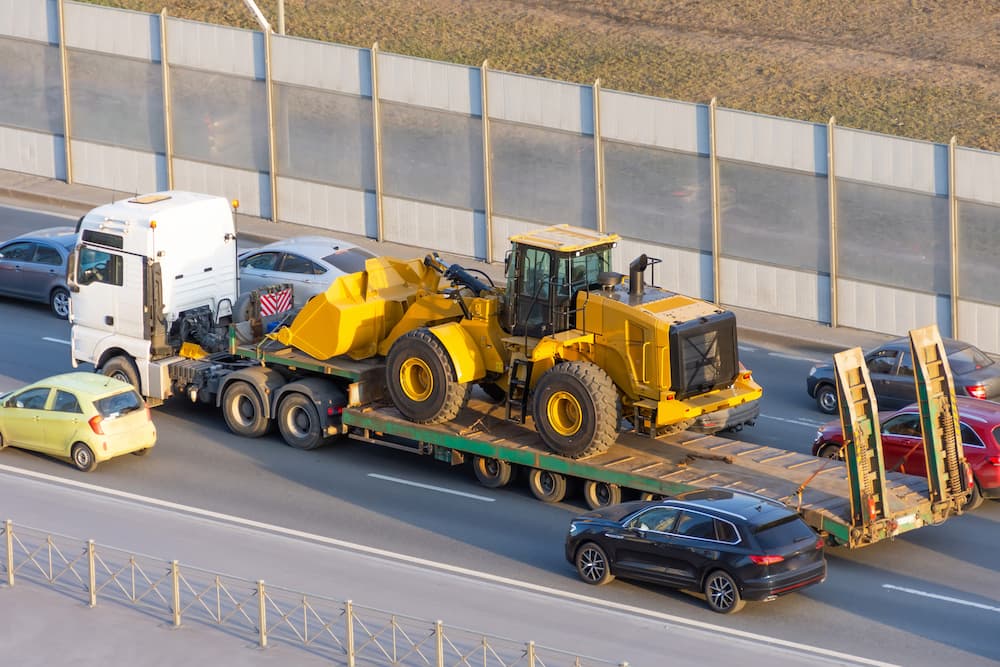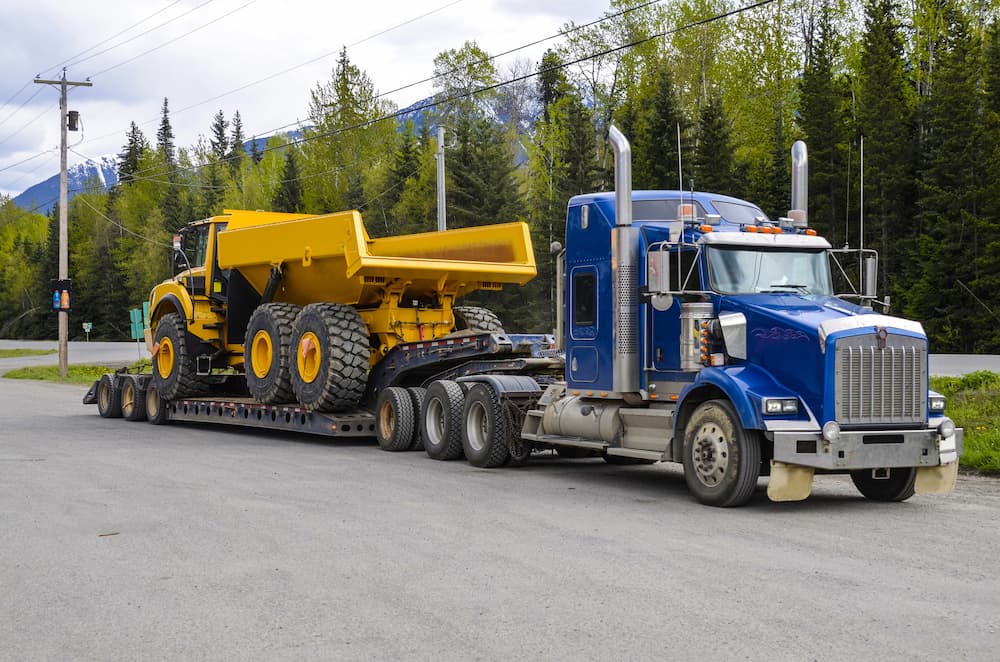
Table of Contents
Cruising in your truck to a work site after lunch, a member of your crew breaks the silence in the cab.
"I saw this one international marketplace with fairly sharp-looking mini-excavators priced to sell."
"Yeah?" you ask, keeping your eyes on the road, but ears on the opportunity.
"Yep," he nodded, "and I'm really not sure what the catch is. They looked clean and solid."
You make a mental note to check out these listings later. But another question rolls into your mind: Is importing heavy equipment a viable cost-cutting measure for your operation?
The answer? Well, that all depends.

On one hand, according to a study by McKinsey, the global construction equipment market is projected to reach $228 billion by 2026—up from $161 billion in 2020. This could indicate a growing demand for heavy machinery worldwide.
Surely this boost in supply means cheaper imported heavy equipment across the board (and the ocean)—right?
On the other hand, the process of importing a model of multi-ton heavy equipment from any number of foreign countries could be a headache like you’ve never experienced.
Then again, someone may know how to help you avoid the pitfalls.
Let's take a look at the pros and cons of what you're in for if you decide to import heavy equipment for sale rather than shop domestically.
Before diving into overseas deals, it's crucial to understand the import regulations governing heavy equipment for the United States and Canada.
Each country has its own set of rules and requirements.
- In the United States, the Environmental Protection Agency (EPA) and the Department of Transportation (DOT) as well as The US Customs and Border Protection (CBP) enforce regulations on emissions, safety standards, and import duties for heavy equipment.
- Similar to the EPA in the U.S., Environment and Climate Change Canada regulates emissions standards for heavy equipment to reduce pollution. Importers must ensure that imported machinery meets Canadian emissions requirements.
Similar to the U.S. D.O.T., Transport Canada sets safety standards for vehicles and machinery, including heavy equipment. Imported machinery must meet Transport Canada's safety regulations or undergo modifications for compliance.
- On top of all of this, Canada Border Services Agency, or CBSA, are the customs officials who oversee procedures and enforce import duties on imported goods—including heavy equipment. Importers must declare imported machinery accurately and pay applicable taxes and duties upon entry into Canada.

Importing heavy equipment involves several steps—including documentation, inspection, and customs clearance.
It typically starts with identifying a reputable seller overseas, negotiating terms, and arranging transportation from a country with an international trade agreement with your home country.
Due to complexities in the process, most buyers choose to partner with an experienced customs brokerage services provider to guide them. While helpful, the fees associated are yet another cost of ownership for said piece of imported heavy equipment.
Upon arrival, the equipment undergoes inspection to ensure compliance with safety and emissions standards before customs can clear it.
Like any major financial strategy for leveraging certain opportunities in the marketplace, there are risks and benefits to importing heavy equipment into the United States or Canada for your construction needs. Let's look at a few of each of the pros and cons of importing heavy equipment, starting with the advantages.
Access to Specialized Equipment
Importing heavy equipment allows construction companies to access specialized machinery that may not be readily available in their country of origin. This can allow them to take on a wider range of projects and compete more effectively.
Cost Savings
In some cases, importing heavy equipment from overseas manufacturers with lower manufacturing costs can result in cost savings compared to purchasing similar equipment domestically. This can help construction companies reduce expenses and improve profits.
Technological Advancements
Equipment from international markets may incorporate the latest technological advancements and features—providing construction companies with state-of-the-art machinery that enhances efficiency, productivity, and safety on job sites.
For all of the advantages, there are several potential cons or disadvantages to consider before importing heavy equipment into the U.S. or Canada for your construction needs.
Importation Costs and Logistics
Importing heavy equipment involves significant costs and logistical challenges—including transportation, customs fees and duties at the port of entry, taxes, and regulatory compliance. These additional expenses can inflate the overall price of importing equipment.
Currency Fluctuations
“When is a dollar no longer a dollar?” Changes in currency exchange rates can affect the cost of importing heavy equipment on the commercial invoice—potentially leading to unexpected expenses or budgetary uncertainties for construction companies.
Warranty and Support
Imported equipment may come with limited warranty coverage and after-sales support—particularly if the manufacturer is located overseas. This can pose challenges for construction companies in terms of maintenance, repairs, and spare parts availability.
Regulatory Compliance
Importing heavy equipment requires compliance with various regulatory requirements—including safety standards, emissions regulations, and import/export laws. Failure to meet these requirements can result in delays, fines, or legal consequences for construction companies.
Cultural and Language Differences
Dealing with international suppliers and manufacturers may involve cultural and language barriers that complicate communication, negotiation, and resolution of issues related to equipment procurement, delivery, and support.
Finding reliable sellers for imported heavy equipment requires diligent research and due diligence. Online marketplaces, industry forums, and trade shows are excellent places to start. Look for sellers with a proven track record, positive reviews, and transparent communication channels to ensure a smooth transaction.

To ensure a smooth importing experience, communication and preparation are key. Maintain open lines of communication with sellers, freight forwarders, and customs agents throughout the process.
Double-check documentation requirements, ensure compliance with regulations, and look for input from folks who have successfully imported heavy equipment in the past for helpful dos, don’t-dos, and expectations.
By staying organized and proactive, you can increase your chances of successfully managing the complexities of importing heavy equipment for your team.
If importing heavy equipment seems daunting, there are alternative options to consider.
- Partnering with an experienced import customs brokerage services provider can streamline the process, reduce risk, and often negotiate better freight and duty rates.
- Seeking out equipment from well-known international manufacturers that have established US dealerships ensures better access to parts and service support down the line.
- Exploring neighboring markets like Canada, Mexico, or the U.S. can sometimes offer competitive prices for certain equipment with shorter equipment shipping times and less complex customs procedures than importing from further abroad.
Are you still considering importing that excavator or road grader? Let's consider what you should consider.
Before importing heavy equipment, consider factors such as warranty coverage, spare parts availability, and after-sales support. It's also crucial to assess the total cost of ownership—including shipping fees, taxes, and potential maintenance expenses.
Conducting a thorough risk assessment and developing a contingency plan can help mitigate potential challenges.
Serving North American Equipment Buyers Since 1958
If you’re looking to keep your business within the countries in North America or you’re looking for a model from the dealership down the street, your friends at My Little Salesman have your back. Since 1958, the marketplace of My Little Salesman has been connecting buyers with sellers of heavy equipment, commercial vehicles, parts, accessories, and much more—even across international boundaries!